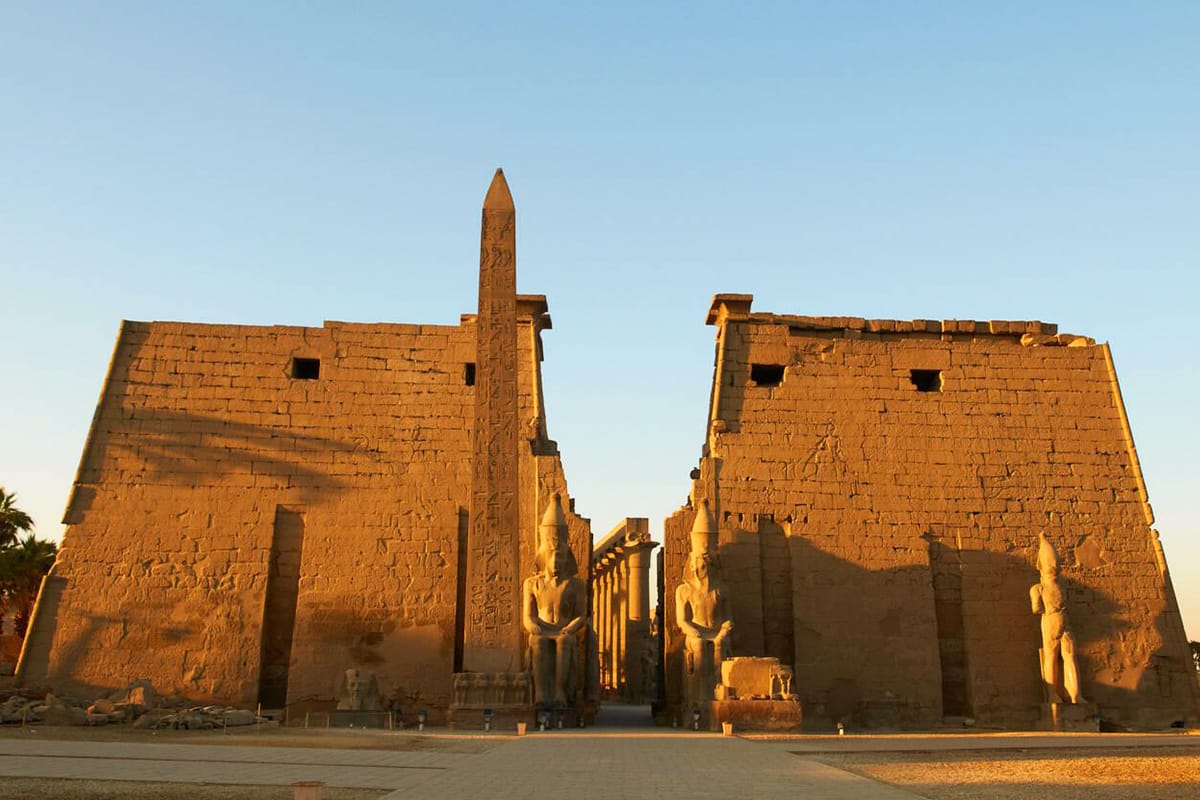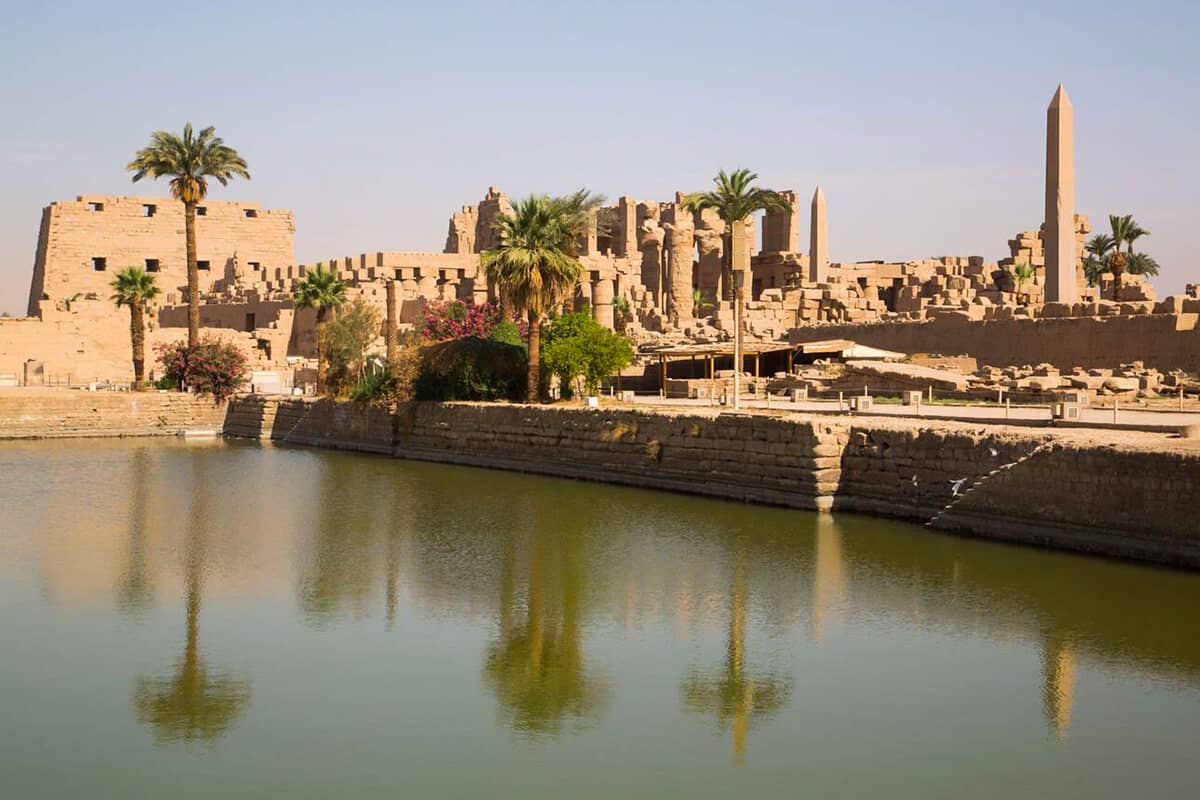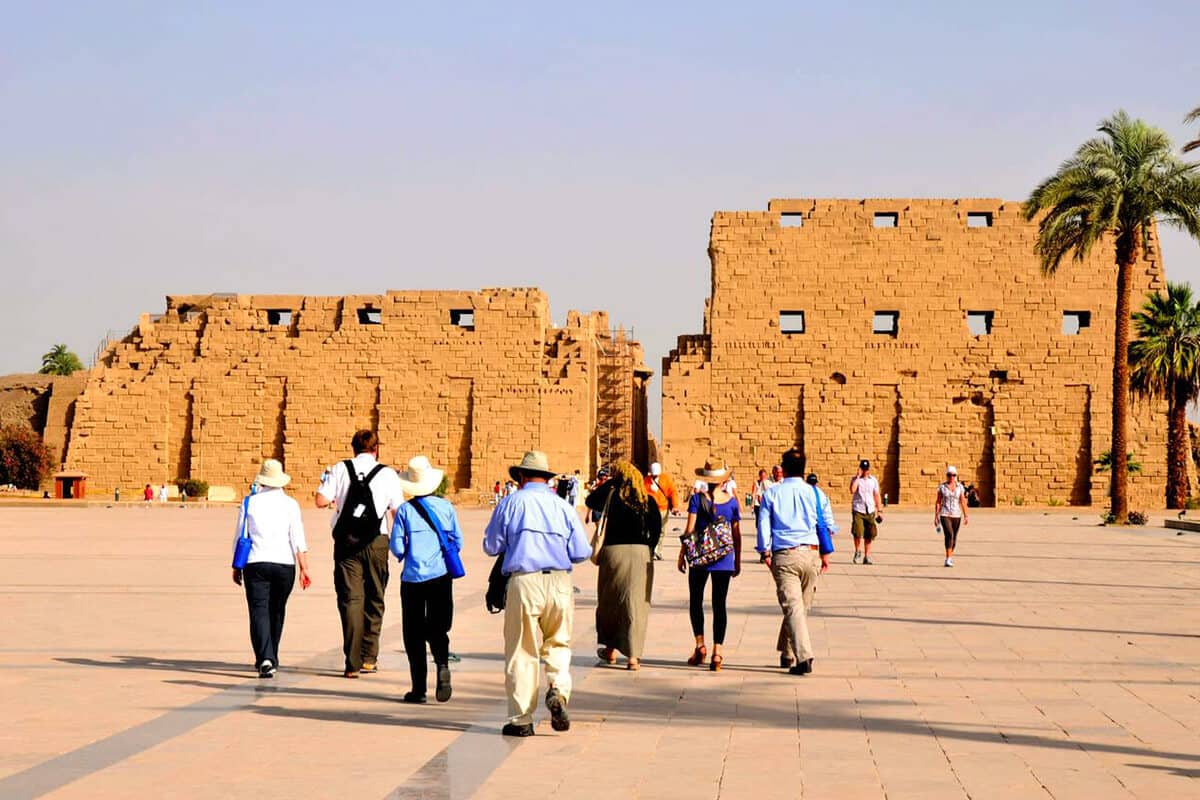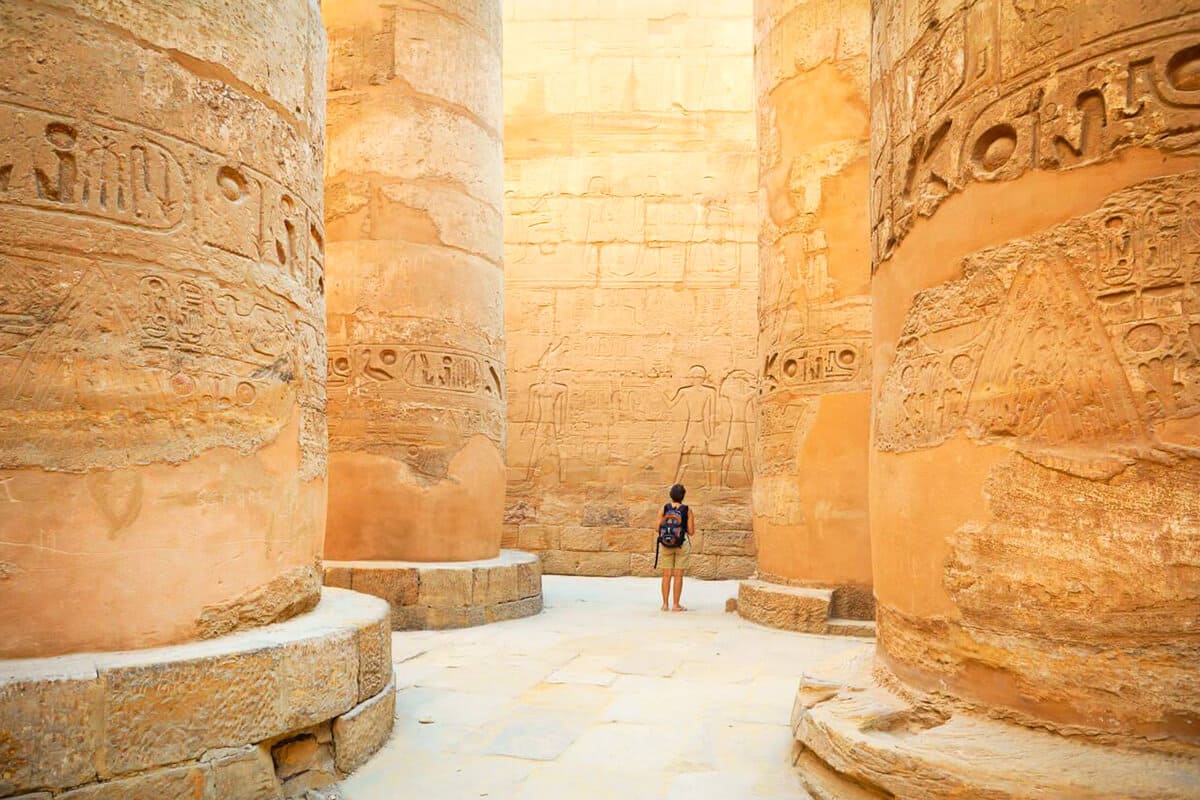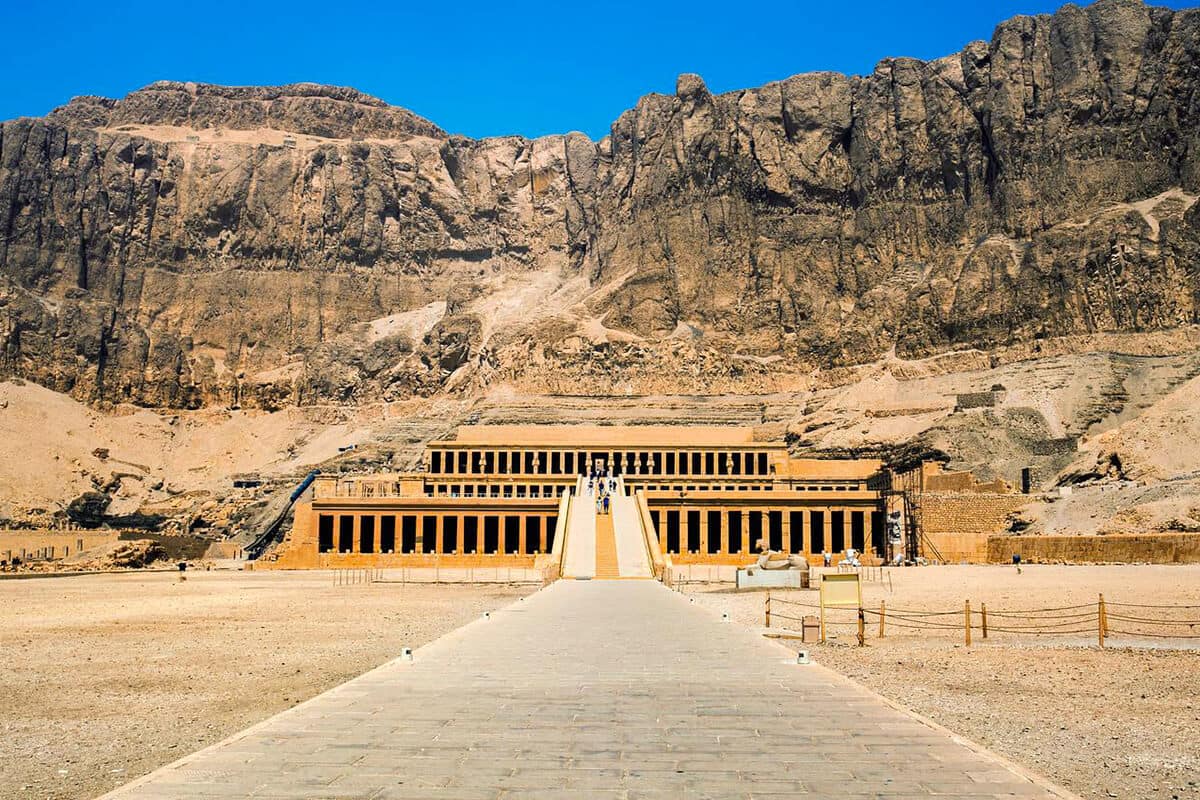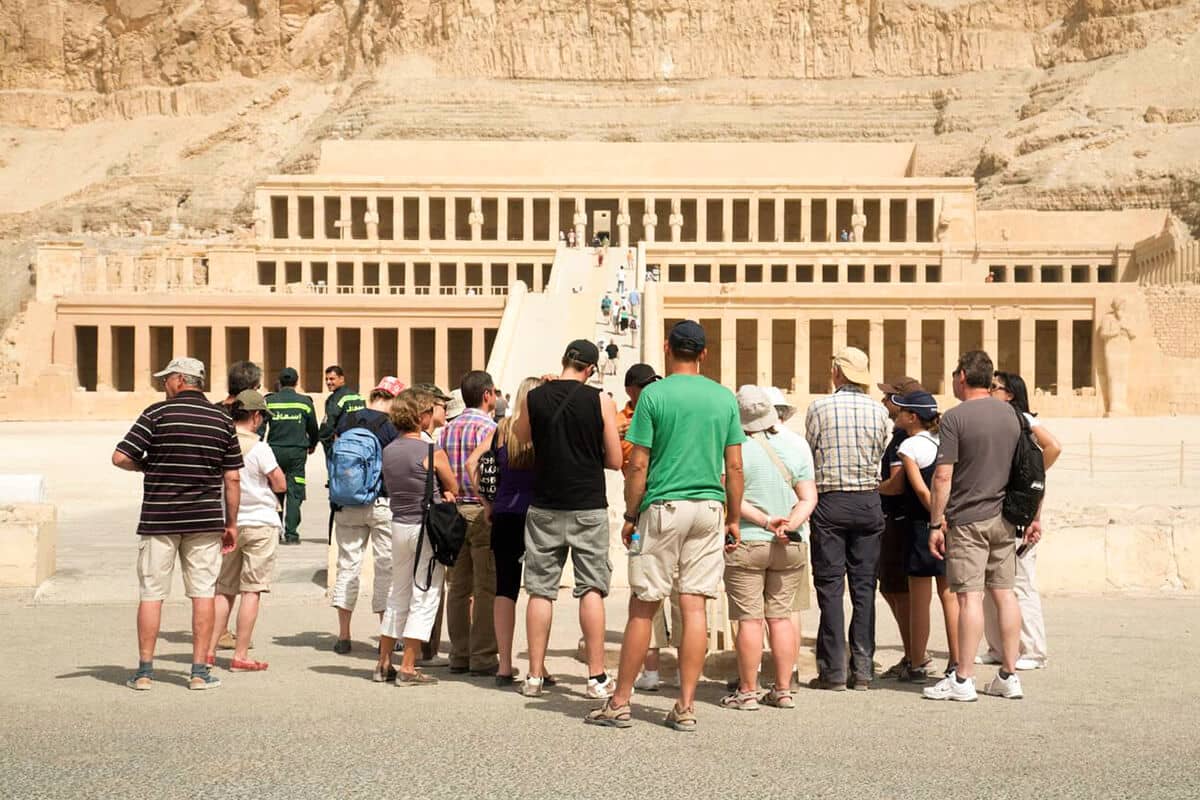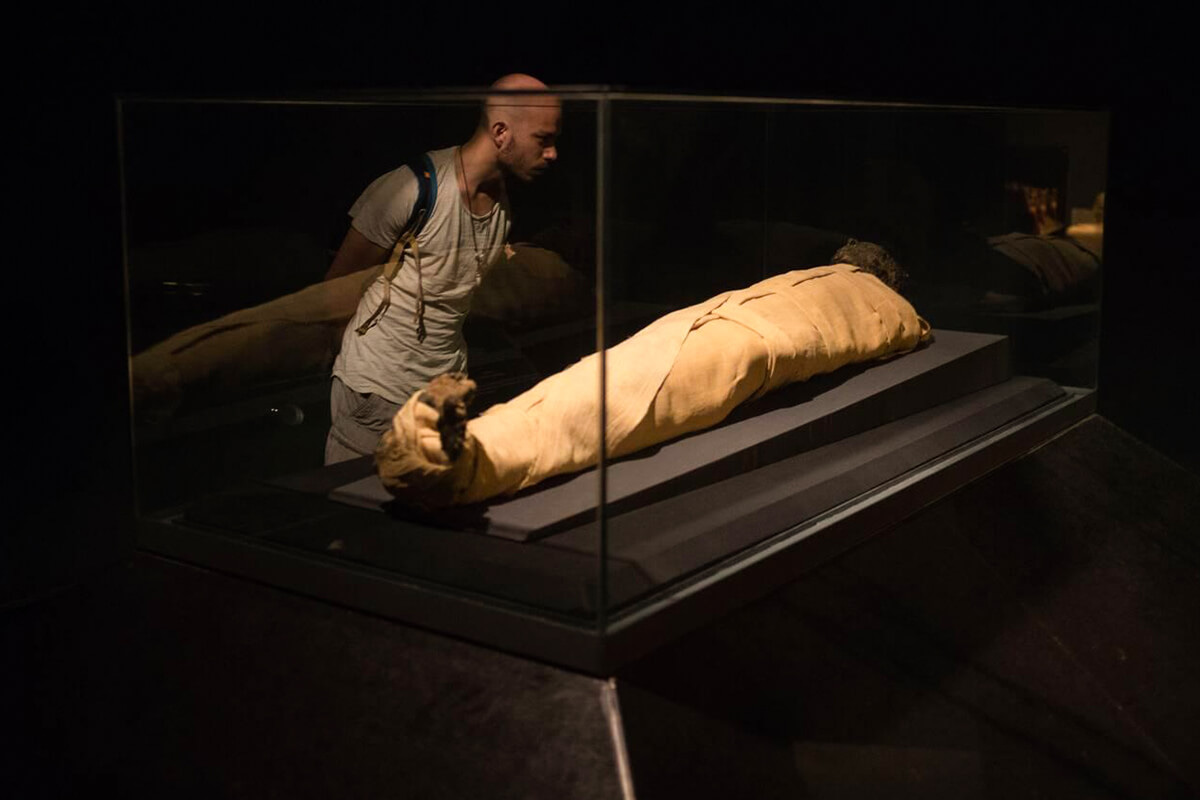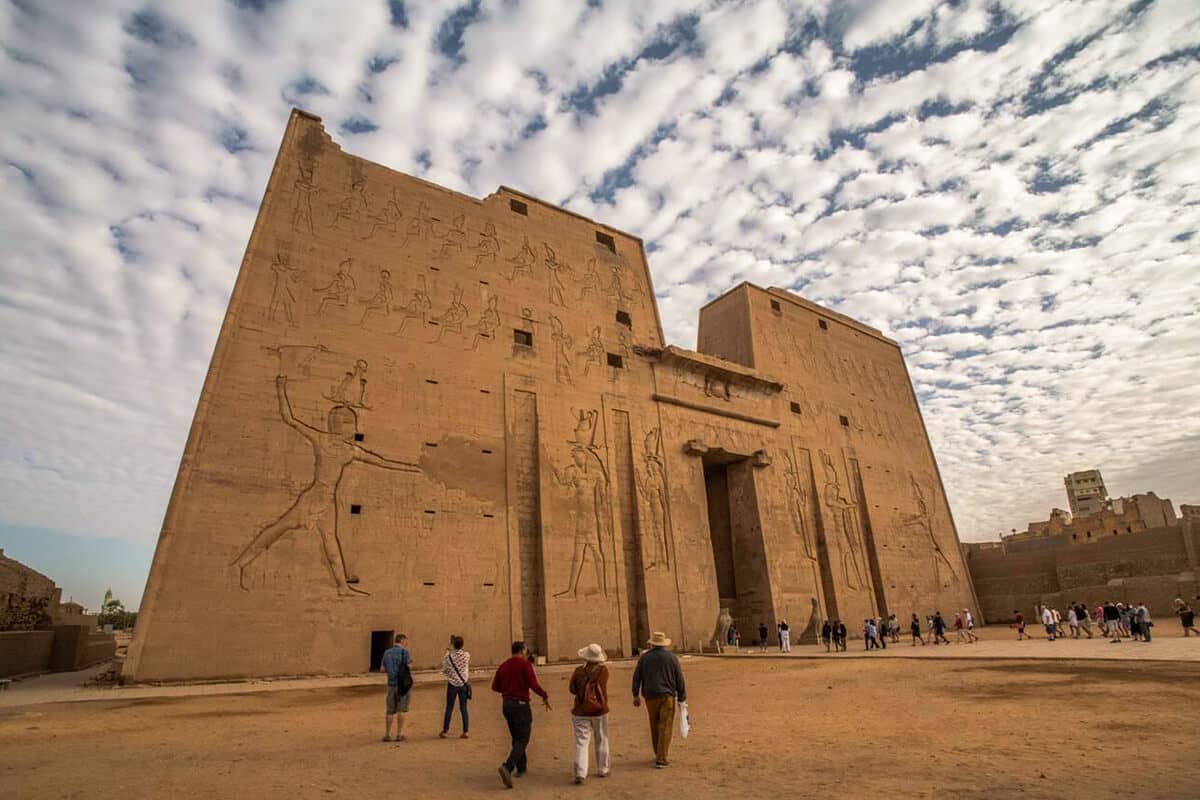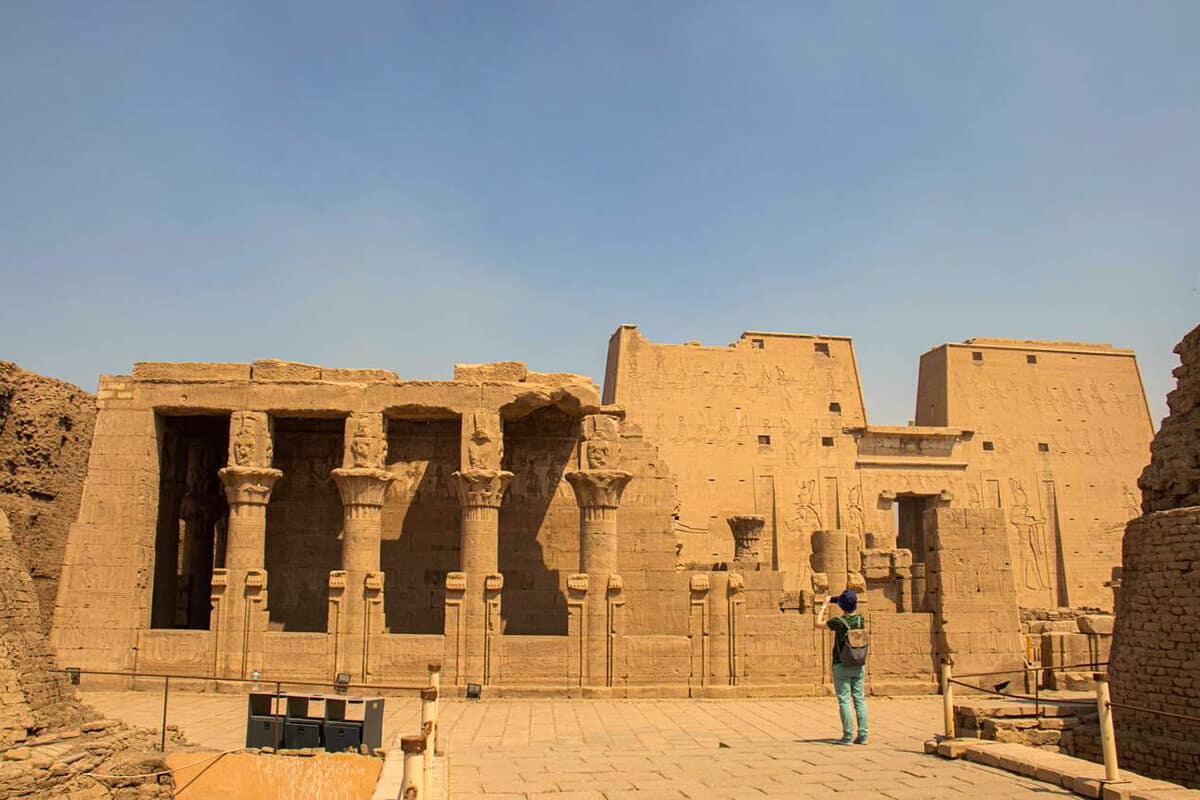The Luxor temple is an important cultural and historical landmark for Egypt travelers. It showcases ancient Egypt’s rich history and cultural heritage, providing a glimpse into its glorious past. Visiting the Luxor temple is a must-do for Egypt travelers, as it offers a unique opportunity to immerse oneself in the ancient Egyptian civilization.
Exploring Luxor temple is an unforgettable experience for Egypt travelers, as it reveals ancient Egypt’s cultural and historical richness. From its remarkable architecture to its intricate carvings, the Luxor temple is a treasure trove of history and culture that offers a glimpse into the past and should be noticed by any traveler to Egypt. In this blog post, we’ll take a closer look at the Luxor temple, its history, and highlights, and share tips for visiting it.
History of Luxor temple
A. The construction of the Luxor temple
Luxor temple was built during the New Kingdom period, between 1392 and 1350 BC, by Amenhotep III, one of the greatest pharaohs of the 18th dynasty. He dedicated the temple to Amun-Ra, the king of the gods, and other gods of the Theban triad, including Mut and Khonsu.
Over time, other pharaohs like Tutankhamun and Ramses II expanded the temple, adding more buildings and structures. Ramses II, in particular, made significant contributions to the temple, building a large pylon and the famous Colonnade.
B. The role of Luxor temple in ancient Egypt
Luxor temple was an important religious site in ancient Egypt, where many festivals and ceremonies were held. It was believed to be the home of Amun, considered the king of the gods and the creator of the universe. The temple was also used as a venue for the coronation of new pharaohs, believed to be the descendants of Horus.
The temple was also an important political center, as it served as the seat of the Theban rulers during the New Kingdom period. The temple was a religious center and a hub for trade, where merchants and artisans would gather to sell their goods and services.
C. The significance of Luxor temple in modern times
Today, Luxor temple is a UNESCO World Heritage site and an important tourist attraction in Egypt. The temple is a symbol of the ancient Egyptian civilization. It is regarded as one of the most impressive temples in Egypt, featuring some of the best examples of ancient Egyptian architecture and art.
The temple’s significance goes beyond its architectural and artistic value. It is also an essential source of income for the local community, providing jobs and opportunities for tourism and hospitality-related businesses.
Furthermore, Luxor temple continues to be a site of ongoing archaeological excavations and research. In recent years, discoveries have been made in and around the temple, shedding new light on the history and culture of ancient Egypt.
Highlights of Luxor temple
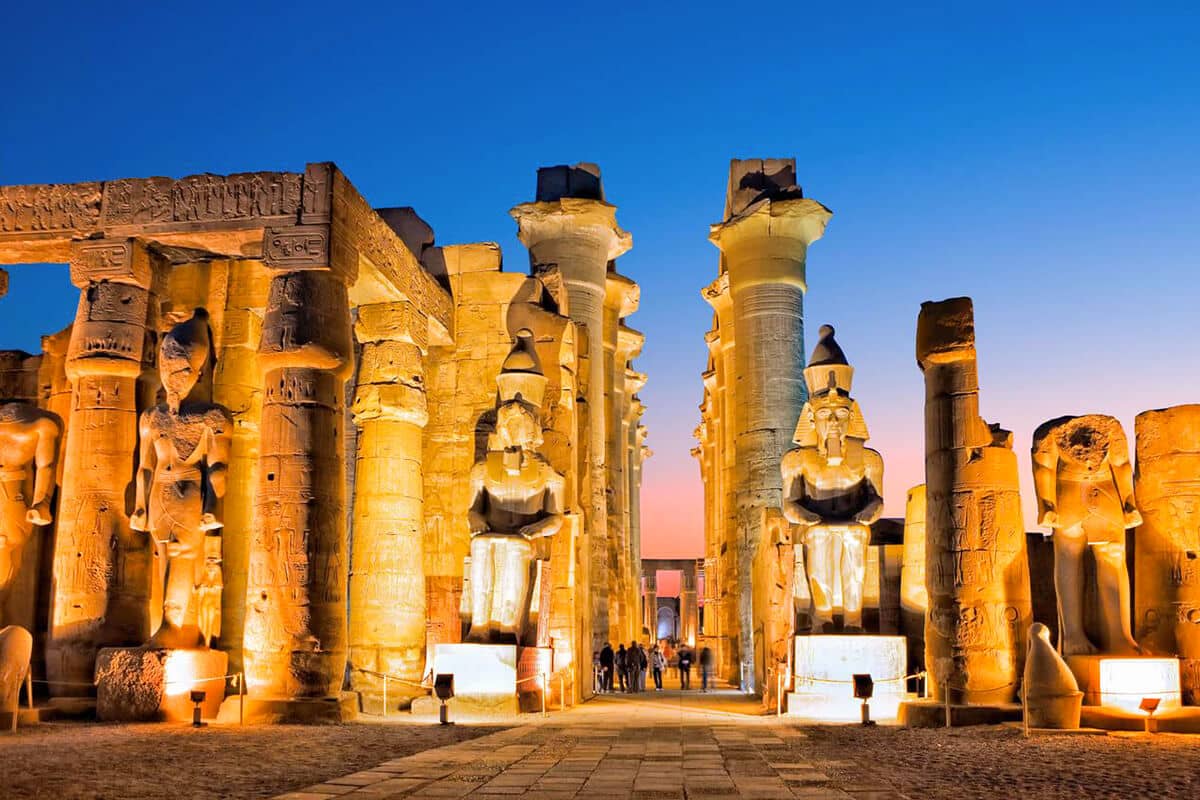
A. The Great Court
The Great Court is the first area visitors encounter when entering the Luxor temple. It is a vast open-air courtyard, measuring approximately 57m by 53m, and was initially built by Amenhotep III. It features an impressive double row of sphinxes, which once lined the processional way that connected the temple to the Karnak temple.
The court was the site of many religious ceremonies and was used as a gathering place for the people during important festivals. Today, visitors can explore the court and admire its impressive architecture, which includes 74 columns with open papyrus capitals and decorated walls with relief carvings.
B. The Colonnade
The Colonnade is one of the most striking features of the Luxor temple. It was built by Ramses II and consisted of 14 large papyrus columns, each approximately 16 meters tall and featuring intricate carvings of the king and various gods.
The Colonnade was built to connect the Great Court with the Hypostyle Hall and serves as a transition from the outdoor to the indoor areas of the temple. The Colonnade’s grandeur and intricate carvings make it one of the most impressive structures in the temple and a must-see for visitors.
C. The Hypostyle Hall
The Hypostyle Hall is a vast hall with a forest of 134 massive columns, built during Amenhotep III’s reign and decorated with reliefs of the king, his family, and gods. It is considered one of the most impressive parts of the temple, featuring stunning architecture and intricate carvings.
The hall was used for religious ceremonies and was believed to be where the god Amun resided. Visitors can explore the gallery and admire its grandeur and beauty, a testament to the incredible skills of ancient Egyptian architects and artisans.
D. The Sanctuary
The sanctuary is the most sacred part of the Luxor temple, where the cult statue of the god Amun was housed. It was only accessible to the high priests and was believed to be where the god communicated with the pharaohs.
The sanctuary was built during Amenhotep III’s reign and later expanded by Tutankhamun and Ramses II. Visitors can explore the refuge and admire its impressive architecture and intricate carvings, which reflect the deep religious beliefs of ancient Egyptians.
Luxor temple and Egyptian culture
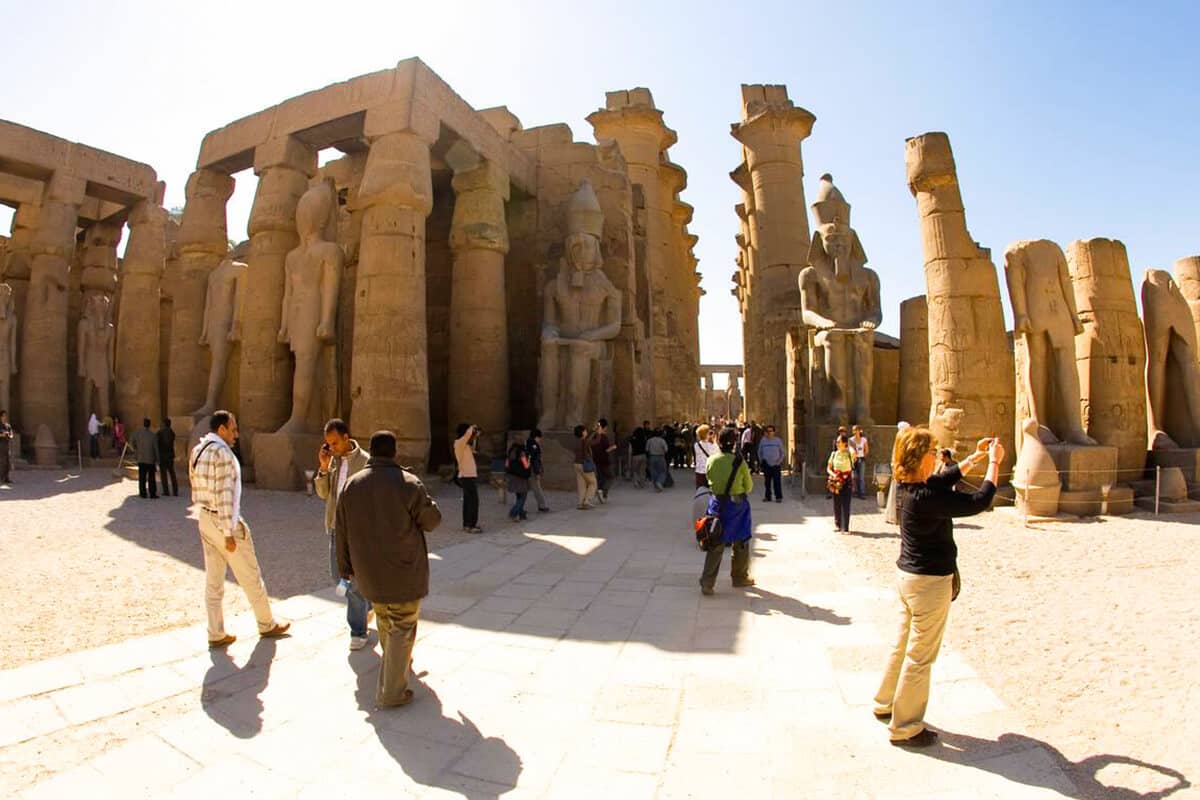
A. Luxor temple and religion
Religion was a crucial part of ancient Egyptian culture, and the Luxor temple played a vital role in religious practices. The temple was dedicated to the god Amun and was believed to be where he resided on Earth. It was also considered where the pharaohs communicated with the gods, making it an important location for the ruling class.
B. Luxor temple and art
The Luxor temple is home to some of the most impressive examples of ancient Egyptian art. From the intricate carvings on the walls to the massive columns that support the structure, the temple is a testament to the incredible skills of ancient Egyptian artists and artisans.
The reliefs and carvings on the walls depict scenes from daily life, mythology, and important religious events. Visitors can see depictions of pharaohs, gods, and goddesses and gain insight into ancient Egyptian culture and beliefs.
C. Luxor temple and politics
The Luxor temple also played a significant political role, particularly during the New Kingdom period. Pharaohs would use the temple as a backdrop for their coronation ceremonies, and it was also the site of important political events, such as the Opet Festival.
The temple’s grandeur and scale were used to impress foreign dignitaries and show the power and wealth of Egypt. The temple also served as a center of administration, where records were kept and officials conducted business.
In conclusion, the Luxor temple is an important historical and cultural site that Egypt travelers should prioritize visiting. The temple’s rich history, impressive architecture, and stunning art provide a glimpse into the ancient Egyptian world and its beliefs and practices.
From the Great Court to the Sanctuary, the Luxor temple’s highlights will leave visitors in awe. The temple’s importance in religion, art, and politics makes it a must-see destination for those interested in ancient history and culture.
Visiting the Luxor temple is not only an educational experience but also an unforgettable one. Visitors can feel the weight of history and the grandeur of ancient Egyptian culture by walking through the temple’s corridors and seeing the towering columns and detailed reliefs on the walls.
If you want to cruise through Nile River check out Egypt Nile River cruises
Don’t miss to check out our All-inclusive egypt vacation packages you can spend one day in egypt, check out in Egypt day tours

